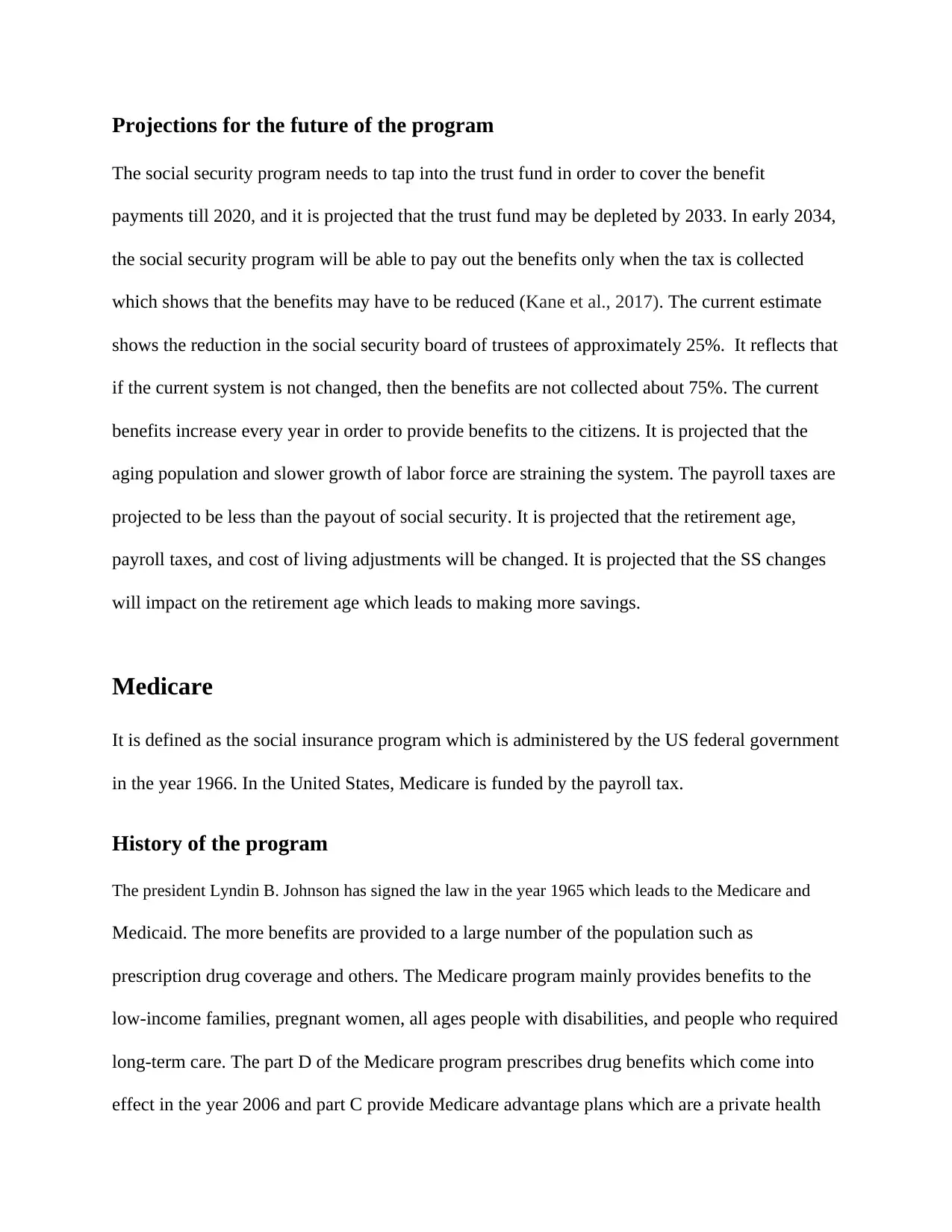The paper discusses the social security and Medicare programs in the United States, including their history, current configuration, and projections for the future. The Social Security program was established in 1935 to provide economic security to workers, and currently provides three types of benefits: retirement, disability, and survivors' benefits. However, it is projected that the program will face a shortage of funds due to an aging population and slowing labor force growth. The Medicare program, which was established in 1965, provides health insurance to individuals under the age of 65, disabled people, and those who require long-term care. The current configuration includes four parts: hospital insurance (Part A), medical insurance (Part B), prescription drug coverage (Part D), and private health plans (Part C). However, it is projected that Medicare will face huge challenges in the future due to increasing healthcare costs and an aging population.
![[object Object]](/_next/static/media/star-bottom.7253800d.svg)
![[object Object]](/_next/static/media/star-bottom.7253800d.svg)







